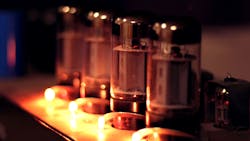Why is Quiescent Current So Important in Class D Amps? (Download)
Back in the day (1970s), audio amplifiers like the Phase Linear 700 were designed with discrete power-transistor components. Huge audio power transistors like the 2N3055 and others back then were configured to drive massive audio power outputs that drove large audio loudspeakers. Rock bands used to place dry ice on stacks of these legendary 350-W/channel amps to cool them down.
Fast forward to 2022 and we find audio design engineers loving the power efficiency of Class D amplifiers. The Class D amp outperforms any Class A, B, or AB linear amplifier architectures. With the latter amplifiers, significant power losses will occur due to biasing elements and the linear operation of the output transistors.
